The 11 Different Types of Surfboards in 2024!
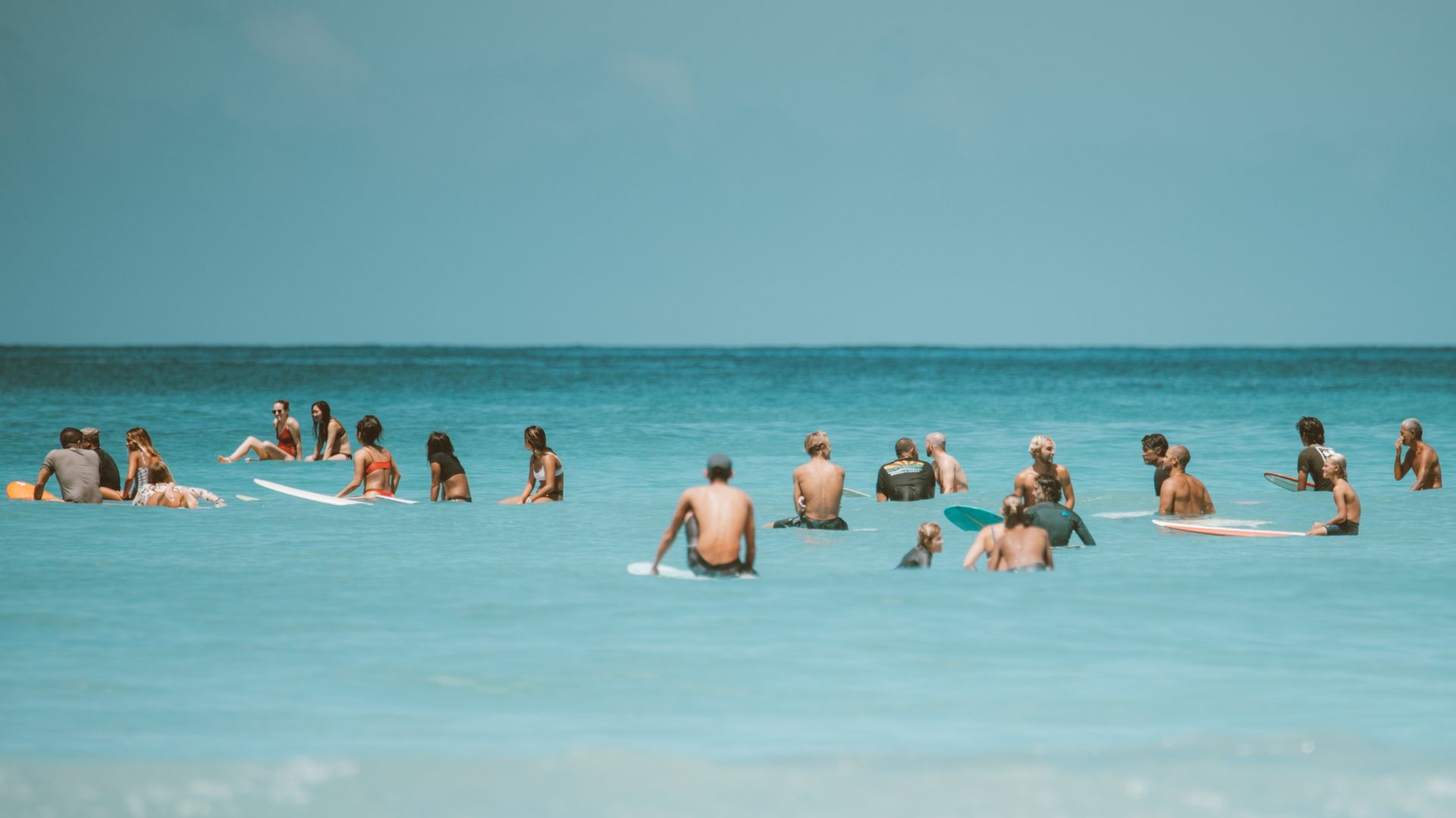
So you've realised that there are many different types of surfboards.
Don't worry! They all get you from A - B (from sitting outback catching rays to riding the froth into the shore), however like different car designs each model has it's own specialities.
This guide will ensure you're up to date with the different types of surfboards in 2024!
What Are The Different Types of Surfboards?
There are several types of surfboards, each designed for specific conditions and riding styles.
Common types include shortboards for manoeuvrability, longboards for stability, fish boards for small waves, and gun boards for big waves.
Each surfboard type requires different skills and understanding. Many argue that riding a shortboard compared to a longboard may as well be a different sport!
11 Different Types of Surfboards
| Board Type | Size Range | Wave Type | Price Range |
|---|---|---|---|
| Shortboard | 5'0” - 7'0” | 2-8 feet | $250 - $600 |
| Fish | 5'0” - 6'6" | 2-6 feet | $300 - $650 |
| Longboard | 9'0” + | 1-6 feet | $600 - $1,200 |
| Funboard/Soft Top | 6’5” - 9'0” | 1-5 feet | $200 - $700 |
| Gun | 7'0” - 11’5” | 10-30+ feet | $500 - $1,500 |
| Hybrid Surfboard | 6’0” - 7’4” | 2-8 feet | $350 - $750 |
| Stand-Up Paddleboard | 8’0” - 12’6”+ | Calm to 6 feet | $500 - $1,500 |
| Tow-In Board | 5’6” - 6’0” | 20+ feet | $500 - $1,000 |
| Mini Simmons | 5’4” - 6’0” | 2-6 feet | $300 - $700 |
| Semi Gun | 6’0” - 7’5” | 8-25 feet | $450 - $900 |
| Foil boards | 4’6” - 5’6” | 2-8 feet | $750 - $1,500 |
Please note that these set prices for different surfboard types can vary depending on the brand, materials, and specific features of the surfboard.
For those visual learners check out this graphic from San Diego Surf School!
Different Types of Surfboards Explained
Surfboards come in various shapes and sizes, each designed to deliver a unique riding experience. Let's explore some of the different types of surfboards and understand what makes each one special.
1. Shortboard (5'0” - 7'0”)
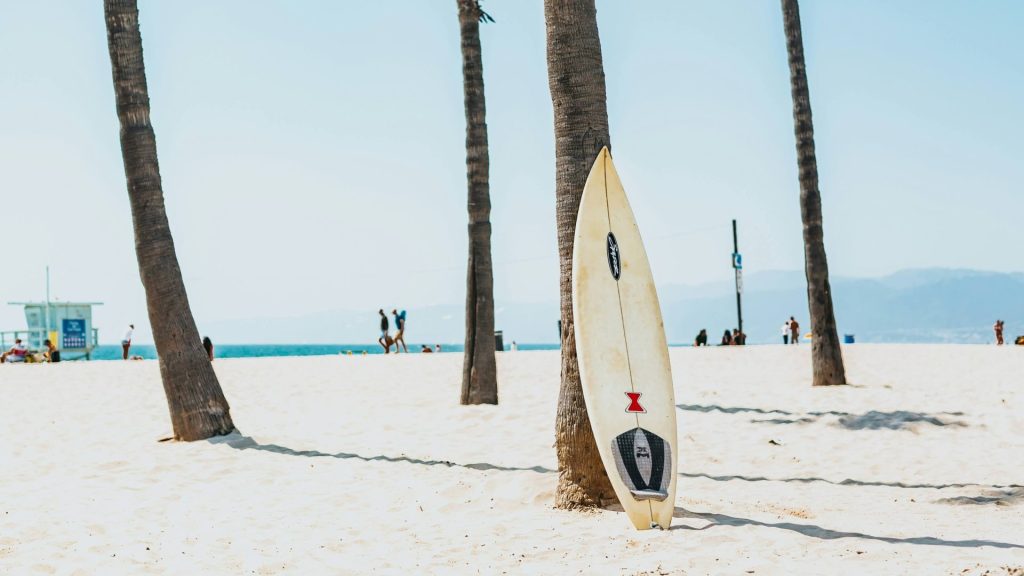
Shortboards are the Ferraris of the surfboard world. They're sleek, narrow, and built for speed and maneuverability. With a pointed nose and a pulled-in tail, they are designed for quick turns and catching smaller, steeper waves.
Shortboards are the go-to choice for experienced surfers who enjoy the thrill of riding fast and performing tricks. Whether you're ripping through barrels or catching big air, shortboards are all about pushing the limits of your surfing skills.
- Board Shape: Sleek, narrow, pointed nose, pulled-in tail.
- Fin Setup: Typically has three fins (thruster).
- Surfing Experience Needed: Advanced - these boards require skill and experience.
2. Fish (5'0” - 6'6")
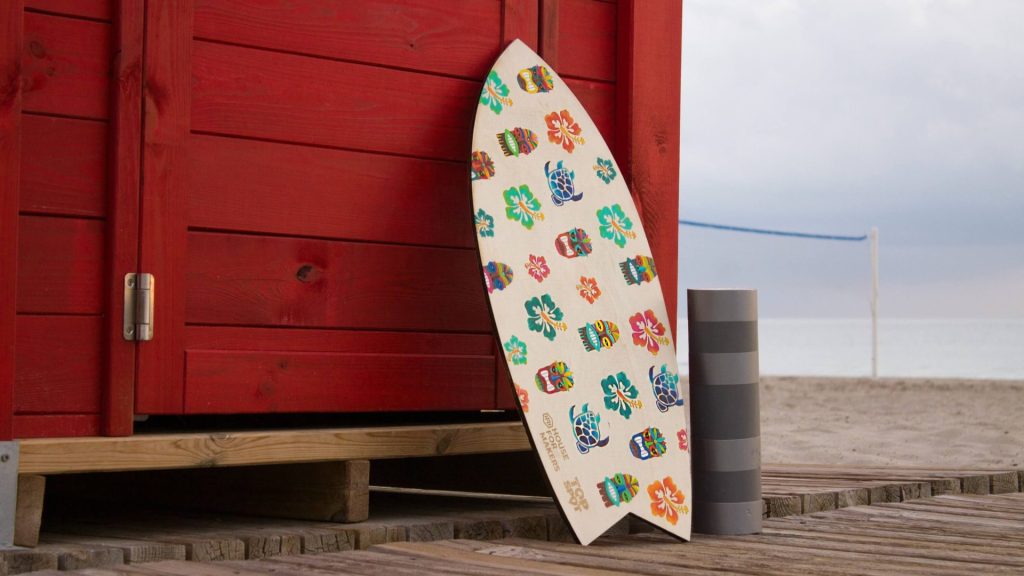
Fish surfboards are a unique and playful breed. With a wide, fish-like shape, swallowtails, and a bit of extra volume, they provide excellent stability and paddling ease.
Fish boards are known for their versatility, making them suitable for surfers of all levels. They excel in smaller, mushy waves, offering a smooth and enjoyable ride. These boards are like the friendly dolphins of the surfboard world, providing fun and forgiveness to riders.
- Board Shape: Wide, fish-like shape, swallowtails.
- Fin Setup: Twin fin or quad fin setups.
- Surfing Experience Needed: Beginner to advanced great for all levels.
3. Longboard (9'0”+)
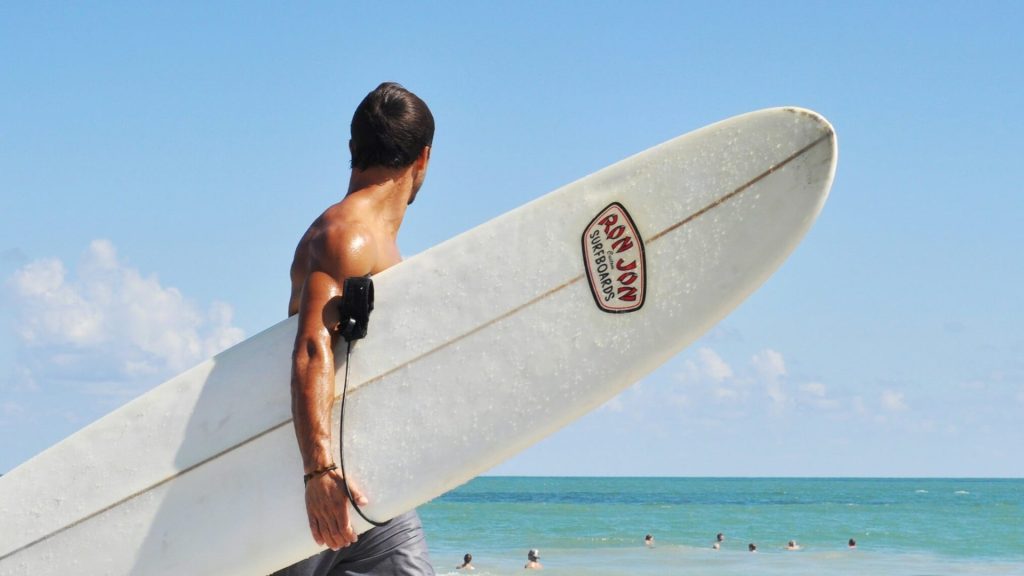
Longboards are like the classic Cadillacs of the surfboard lineup. They're large, stable, and designed for riders seeking a relaxed and graceful surfing experience. With a rounded nose and a wide body, they're excellent for catching tons of waves and hanging ten.
If you're new to surfing or looking to enjoy small and rolling waves, longboards are your best companions. They offer an incredible platform for stylish and timeless moves, reminding us of the roots of surfing.
- Board Shape: Large, rounded nose, wide body.
- Fin Setup: Single fin or 2+1 setup.
- Surfing Experience Needed: Beginner to advanced - great for all levels.
4. Funboard/Soft-Top Surfboard (6’5” - 9'0”)
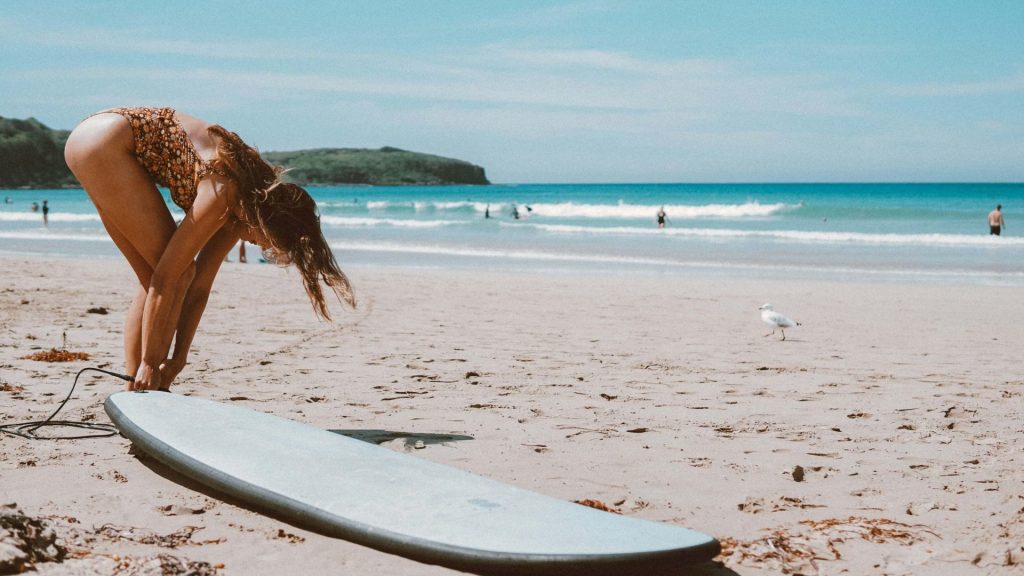
Funboards, as the name suggests, are all about having a blast in the water. These boards strike a balance between longboards and shortboards, offering versatility and stability. They are often considered the best sized surfboards for beginner surfers looking to build the fundamental skills.
Whether you're a beginner looking to progress or an experienced surfer who wants to enjoy smaller waves, funboards are the answer. They provide a forgiving platform for learning and improvement. With various fin setups to choose from, you can customize your ride according to your preferences.
- Board Shape: A balance between longboards and shortboards.
- Fin Setup: Various options including single fin, 2+1, or thruster.
- Surfing Experience Needed: Beginner to advanced - great for all levels.
5. Gun (7'0” - 11’5”)
Guns are the big-wave warriors. These surfboards are built for one thing: riding massive waves. With a streamlined shape, pointed nose, and a strong backbone, they're designed to handle the raw power and speed of big surf.
You'll often find experienced surfers on guns, charging down the face of some of the largest waves on the planet. If you're daring enough and have the skills to match, guns are the choice for taking on the giants of the ocean.
- Board Shape: Streamlined with a pointed nose.
- Fin Setup: Typically 3 fins or specialized big-wave fins.
- Surfing Experience Needed: Advanced - for experienced big-wave surfers.
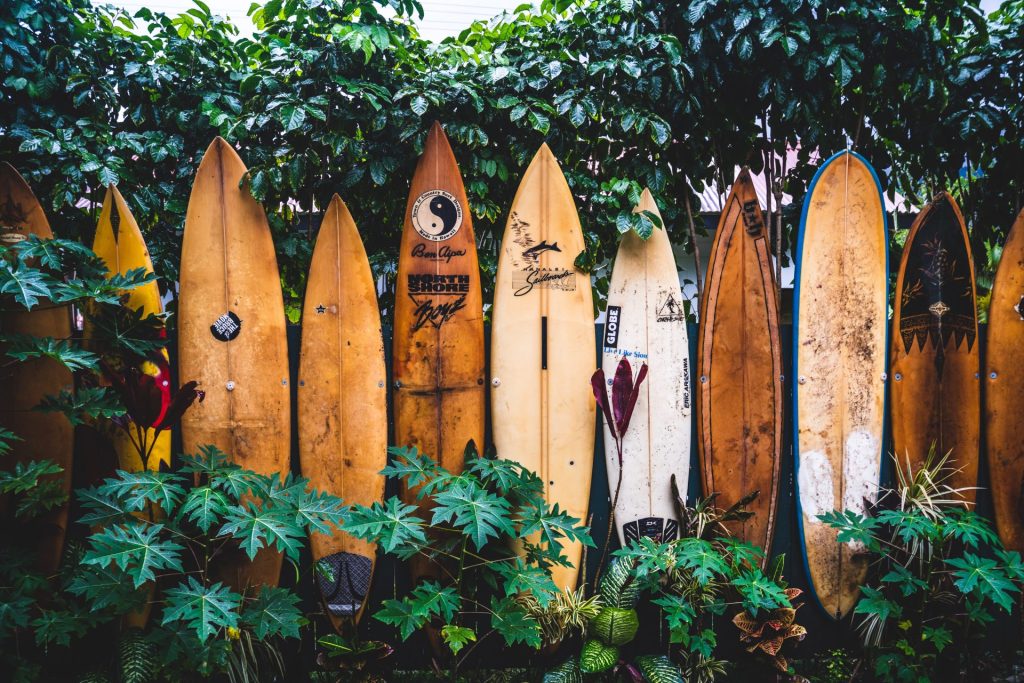
6. Hybrid Surfboard (6’0” - 7’4”)
Hybrid surfboards are the chameleons of the surfing world. They combine features from various board types to create a versatile and all-purpose ride. With a balance between shortboards and funboards, hybrids offer the best of both worlds.
They work well in a wide range of wave conditions, making them suitable for surfers who want a single board to handle different situations. Whether you're transitioning from a longboard to a shortboard or simply seeking an adaptable ride, hybrid surfboards have you covered.
- Board Shape: A hybrid between shortboards and funboards.
- Fin Setup: Various options, often thruster or quad setups.
- Surfing Experience Needed: Intermediate to advanced - suitable for a wide range of skill levels.
7. Stand-Up Paddleboard - SUP (8’0” - 12’6”+)
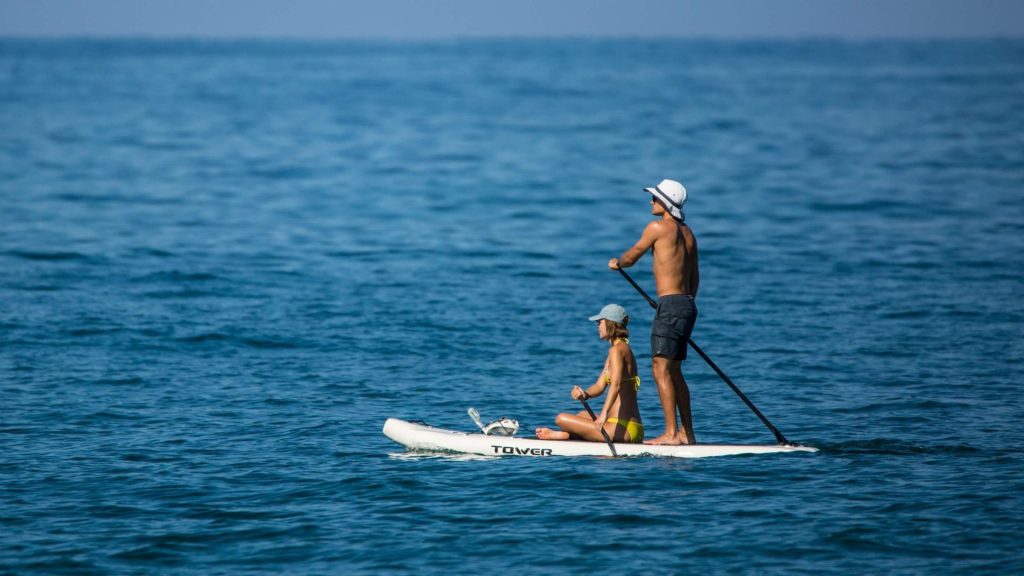
Stand-Up Paddleboards, or SUPs, are the kings of versatility. With their large size and wide body, they are stable platforms that can be used for various activities, including traditional stand-up paddleboarding and catching smaller waves.
SUPs provide excellent stability, making them accessible to beginners. They are a fantastic choice for those who enjoy the calm of the ocean or exploring flatwater locations.
- Board Shape: Large, wide, and stable.
- Fin Setup: Often a single fin or removable fin system.
- Surfing Experience Needed: Beginner to advanced, depending on the intended use.
8. Tow-In Board (5’6” - 6’0”)
Tow-in boards are specialized surfboards built for one thing: towing into massive waves with the help of personal watercraft.
These boards are compact and built for speed, providing the ability to catch and ride waves that are too fast and massive for traditional paddling. Tow-in surfing is an extreme sport and requires expert-level skills and experience.
- Board Shape: Compact and designed for speed.
- Fin Setup: Customized for specific waves.
- Surfing Experience Needed: Advanced to expert - reserved for tow-in surfers
9. Mini Simmons (5’4” - 6’0”)
Mini Simmons boards are quirky, unique, and a whole lot of fun. They have a wide and flat design with a signature double-keel fin setup, making them fast and maneuverable.
The shape is inspired by boards from the 1950s, and it's a great option for surfers looking to catch small to medium-sized waves with a playful, retro vibe.
- Board Shape: Short, wide, and flat with a distinct double-keel fin setup.
- Fin Setup: Twin keel fins.
- Surfing Experience Needed: Beginner to advanced - ideal for those who want a fun and retro surfing experience.
10. Semi Gun (6’0” - 7’5”)
Semi guns are designed for those looking to up their big-wave game. These boards have a more streamlined shape compared to standard shortboards but are not as long as traditional guns.
Semi guns provide increased stability in larger waves and offer better paddle power. They're the right choice for surfers seeking to step up their skills and take on challenging wave conditions.
- Board Shape: Streamlined with a pointed nose, like a shorter gun.
- Fin Setup: Typically thruster setups for control.
- Surfing Experience Needed: Intermediate to advanced - best for those transitioning to big waves.
11. Foil Boards (4’6” - 5’6”)
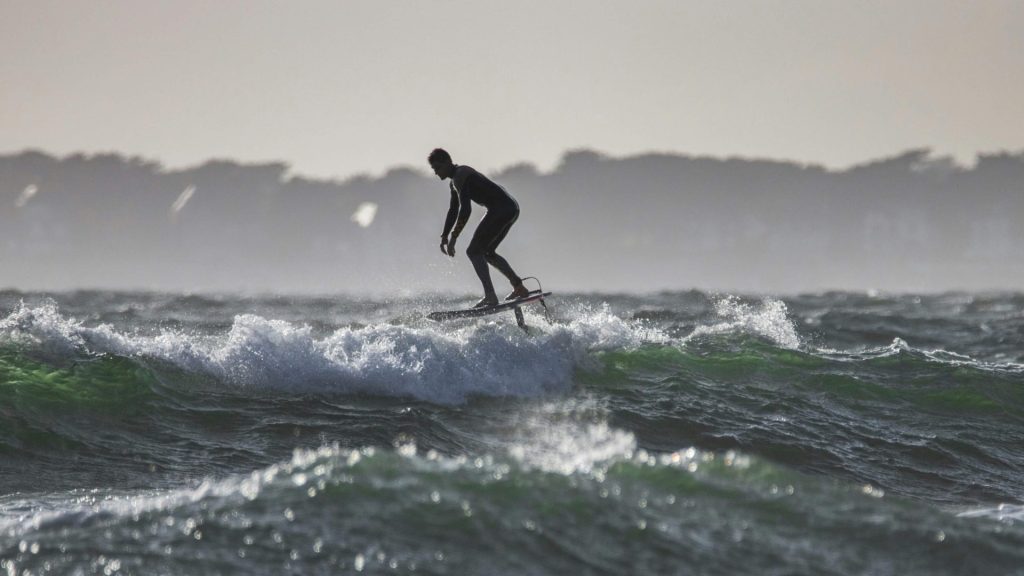
Foil boards are a new and exciting addition to the surfing world. These boards are specially designed for hydrofoiling, a technique that involves riding above the water's surface.
Foil boards feature a hydrofoil attachment beneath the board, creating lift and allowing surfers to glide effortlessly. They're suitable for experienced surfers looking to explore new dimensions in wave riding.
- Board Shape: Compact and designed to accommodate a hydrofoil.
- Fin Setup: Hydrofoil setup.
- Surfing Experience Needed: Advanced - hydrofoiling requires specific skills and practice.
Different Types of Surfboards Video
Different Types of Surfboard Materials
Surfboards come in various materials, each offering unique advantages and characteristics. Here's a breakdown of common surfboard materials:
Soft-Top Surfboards
Soft-top surfboards are excellent for beginners and anyone looking for a forgiving ride. They feature a foam deck that's soft to the touch, making wipeouts less painful. These boards are durable and float well, making them ideal for learning.
Pros: Soft-top surfboards are excellent for beginners. Their foam construction makes them extremely buoyant and forgiving, ideal for learning to catch waves. They're also safer as the soft exterior minimises the risk of injury.
Cons: These boards are not very suitable for advanced surfers due to their slower speed. They're also less durable and may not perform as well in more challenging wave conditions.
Wooden Surfboards
Wooden surfboards combine craftsmanship and performance. They're often handmade from beautiful wood types like balsa or cedar and are becoming a dying breed in the list of different types o surfboards.
Wooden boards provide a unique, eco-friendly riding experience. They're favoured by experienced surfers who appreciate the artistry and natural feel.
Pros: Wooden surfboards are often handcrafted and have a classic, artistic appeal. They are eco-friendly and provide a unique, smooth ride. The natural wooden look is a big plus.
Cons: Wooden boards tend to be heavier than their foam counterparts. They also require more maintenance to keep them in top condition, and they can be quite expensive.
Polyurethane (Poly) Surfboards
Polyurethane boards, commonly referred to as poly boards, are the traditional surfboard material. They have a foam core covered in fibreglass and polyester resin. These boards offer excellent manoeuvrability and are responsive to the rider's input. They're well-suited for intermediate and advanced surfers.
Pros: Traditional polyurethane surfboards offer fantastic control and responsiveness. They are a favourite among professional surfers for their high-performance capabilities.
Cons: Poly boards are more delicate and tend to chip or crack if you hit a hard surface. They're also heavier than epoxy boards, making them slightly harder to paddle.
Epoxy Surfboards
Epoxy surfboards are known for their durability and lightweight construction. They feature an EPS foam core and epoxy resin. Epoxy boards tend to have a bit more buoyancy, making them great for small to medium-sized waves. Their strength and lighter weight make them a popular choice among surfers.
Pros: Epoxy surfboards are incredibly lightweight and durable. They're known for their buoyancy and maneuverability. Epoxy boards work well in a wide range of wave conditions.
Cons: While they are durable, epoxy boards are not entirely immune to damage. They can still get dings, but repairing them is a bit different from traditional polyurethane boards. They're also pricier.
Poly vs Epoxy Surfboards: Which One Should I Buy?
The choice between poly and epoxy surfboards depends on your skill level, the type of waves you ride, and your personal preferences. Epoxy boards are great for beginners and those who want a durable, easy-to-paddle option. Poly boards offer more manoeuvrability and responsiveness, making them a better choice for experienced surfers. It's important to test both and see which one feels better for your style of riding.
Factors Affecting Your Board’s Performance
Several factors influence different types of surfboards performance which in turn determine how it rides and handles in the waves. Let's explore these important variables:
Volume
The volume of a surfboard measures the board's buoyancy and how well it floats. More volume provides greater stability and paddling ease, ideal for beginners. Less volume allows for more manoeuvrability and is preferred by experienced surfers.
To quickly calculate your board's volume, try Fire Wire's Surfboard Volume Calculator.
Board Length
The length of a surfboard plays a crucial role in its performance. Longer boards offer more glide and stability, making them better suited for smaller waves and beginners. Shorter boards excel in larger waves and promote agile maneuvers.
Width Of Board
Board width affects stability. A wider board offers more balance and is often favoured by beginners. Narrow boards enhance manoeuvrability and responsiveness, making them a choice for advanced surfers.
Thickness
The thickness of a surfboard impacts its buoyancy and stability. Thicker boards float better and are stable, ideal for novice surfers. Thinner boards allow for better control and sharper turns, preferred by more experienced riders.
Foil
Foil refers to the board's thickness distribution from nose to tail. A thin foil is more maneuverable and responsive, while a thicker foil provides more stability and buoyancy.
Build Material
The choice of material significantly influences a board's weight, durability, and performance. Different materials offer varying flex patterns, buoyancy, and strength, affecting how the board rides.
Keep in mind that the right combination of these factors depends on your skill level, wave conditions, and personal preferences, so experimenting with different boards can help you find the ideal match for your surfing style.
Different Types of Surfing
Surfing is more than just riding waves; it's a diverse world of water sports. Here are some of the different forms of surfing activities that you can enjoy while on vacation when using different types of surfboards.
| Different Types of Surfing | Description |
|---|---|
| Surfing | Riding waves while standing on a surfboard. |
| SUP | Stand-up paddleboarding on a stable board. |
| Bodyboarding | Lying on a small board and catching shore waves. |
| Bodysurfing | Catching waves using only your body, no board. |
| Foil Surfing | Riding waves with the help of a hydrofoil wing. |
| Kneeboarding | Kneeling on a kneeboard and riding waves. |
| Windsurfing | Propelling across the water using a sailboard. |
| Kite Surfing | Using a large kite to ride waves with a board. |
| Surf Kayaking | Riding waves in a kayak specially designed for it. |
| Surf Ski | A kayak optimized for wave riding. |
| Wakeboarding | Being towed on a short board by a boat's wake. |
Summing It Up: What To Do Now
The list goes on and on for different types of surfboards. It is a forever evolving domain with board shapers taking advantage of advances in technologies to establish advanced board designs.
If your interested in learning more about surfing discover our many guides that will inform you on your surfing journey. Don’t forget to follow us on Facebook & Instagram to stay informed on our amazing surf shots and stories shared from surf creators around the world!
Frequently Asked Questions
What are the different types of surfboards?
There are various types of surfboards, including shortboards, longboards, fish boards, and gun boards, each designed for specific conditions and riding styles.
What is the most popular type of surfboard?
The popularity of surfboard types varies by region and surfer preferences, but shortboards are commonly used for their manoeuvrability and performance.
What do different types of surfboards do?
Different surfboards are designed for specific wave conditions and riding styles, such as shortboards for manoeuvrability and longboards for stability.
Are there different types of surfboards?
Yes, surfboards come in various types, each catering to different wave conditions and surfing styles.
What is the hardest surfboard to ride?
Shortboards are often considered more challenging due to their smaller size and less stability, making them harder for beginners.
What are the strongest surfboards?
Epoxy surfboards are generally known for their durability and strength, making them a strong choice for various surf conditions.


